Washington's fleets-pawns in the APR and Europe will be armed with long-range "6-Standards": the threat to the Russian and Chinese Navy doubles
Extremely important from a geo-strategic point of view, the event occurred at the beginning of 2017 in the main US military department: the country's defense ministry allowed the main aerospace giant Raytheon to sell prospective SM-6 (RIM-174 ERAM) advanced anti-aircraft guided missiles to foreign customers, most of which are located in the Asia-Pacific region. It would seem that nothing supernatural happened, because the Japanese destroyers URO “Congo” and “Atago” were armed with anti-ballistic missiles RIM-161A / B, designed to intercept the “equipment” of OTBR and MRSD on the exo-stratosphere section of the flight trajectory, at the same time, in training interceptions, they showed themselves quite well. But not everything is so simple: interceptors of the RIM-161A family, although they have an 500 km radius of action, are highly specialized missiles for destroying ballistic targets outside the dense stratosphere, and therefore seriously affect the outcome of a hypothetical military conflict using low-altitude missile systems, large tactical missiles range, PRLR and UAV they can not. This is not the case with multipurpose anti-aircraft missiles such as the RIM-174 ERAM.
Long-range fire tests of the first prototype of the promising RIM-174 ERAM SAM began on September 5 of the year 2008. Then it was possible to achieve a long over-the-horizon interception of the BQM-74 "Chukar" air target, imitating a cruise missile. At the same time, the missile defense system used target designation data from a third-party source (obviously, the AWACS aircraft of the AWACS system) on the main flight leg and the active radar homing head (ARGSN) in the final leg. The homing head was developed on the basis of ARGSN installed on air combat guided missiles of the AIM-120C AMRAAM family and equipped with a digital programmable radio-correction module, which gives SM-6 another unique quality: the ability to receive target designation from any means of exchanging tactical information of sea, land or air basing . This quality was confirmed during the next training interception of an over-the-horizon air object that took place on 14 on September 2016. SAM RIM-174 ERAM was launched from a specialized ground-launch complex LLS-1 USS "Desert Ship" and entered the trajectory of a long-range interception target. Flight correction and target designation were performed onboard the X-NUMX-generation F-5A multi-purpose tactical fighter with the on-board AN / APG-35 radar.
In yet another trial, concerning the problems of destruction of air targets, 24 October 2014 years, were intercepted while 2 more complex object - subsonic sverhmalovysotnaya target BQM-74E and supersonic low-altitude GQM-163A «Coyote", flying from wave crest at about 2800 km speed / h Two interceptor missiles RIM-174 ERAM launched from UHFU Mk 41 missile cruiser URO CG-62 USS "Chancellorsville" destroyed targets on target designation of another "Aegis" ship - the destroyer URO USS DDG-102 "Sampson". SM-6 anti-aircraft guided missiles are equally fast interceptors (second only to maneuverability), like our 5В55РМ and 48Н6Е shipboard C-300F / FM, but they have several of the most important "trumps" that are on top of the moment, they are on top of now. in missile defense of warships of the Russian Navy.
1. Introduction of an active radar homing channel based on AIM-120C-7 missiles tested by the GOS, which allows receiving target designation from any units in the Link-16 tactical network, which in turn makes it possible to implement the “let-forget” mode and release (unload) the multi-element computing system AN / UYK-7 / 20 of the Aegis BIUS for more efficient performance of other tasks (for example, anti-ship). Our 5B55PM and 48Н6Е missiles to this day use only PARGSN, which assigns the task of tracking and highlighting 6 air targets to the antenna posts 3Р41 or 30Н6Е just prior to the moment of defeat of these goals. Moreover, the active radar homing RIM-174 ERAM perfectly compensates for the main disadvantage of "Aegis" - the presence of only 2-4-x target channels corresponding to the number of 1-channel radar AN and SPG-62. After upgrading the Aegis ship with more modern AMRL MRLS, the number of simultaneously fired targets can reach more than 25 units. Recall that our shipborne anti-aircraft missile system "Polimen-Redut" should reach the level of SM-6, but this will happen only after the integration of long-range missiles of the 40H6 type.
2. The second advantage is the radius of interception of air targets, which already today at RIM-174 ERAM reaches 370 km. Not a single Russian sea-based missile defense system today has such ultra-long-range characteristics: the 48H6E SAM, taking into account the parameters of the ship's on-load RPN 30H6E and semi-active RGSN, reaches the range of 160 km. Such a large range of the RIM-174 ERAM is explained by the constructive identity of its power rocket launcher with the installation of the RIM-161A / B interceptor (SM-3): the launch and the initial stage of the acceleration of the SM-6 occur due to the 468-kilogram solid fuel stage Mk72 operating on oligomer of butadiene with a hydroxyl functional group at the ends of the molecular chains. The booster stage is also equipped with a system for deflecting the thrust vector of 4's nozzles in the tail section of the rocket. The marching mode is accompanied by the operation of the 2-MASON TRM Mk104 with a mass of charge 360 kg; he brings the speed of the combat stage to about 9000 km / h. The maximum range in 370 km is achieved with a ballistic configuration of the flight path to the target with altitudes from 25 to 35 km; with a flat trajectory type, in the denser layers of the atmosphere (17-25 km), the range is limited to 240-270 km. There is also information that the latest versions of the “Standard Missile-6 Dual-I” will be able to intercept targets at a distance of 460 km, of course, with a mid-flight section at an altitude of about 35-40 km. Against this background, the existing "Forts-M" and the not fully modified Redoubts look very faded. The only advantage of our missiles of the 48H6 type will be high ultimate overloads up to 35-40 units, which allow to destroy intensely maneuvering supersonic air attack weapons.
Note that almost all informational Internet resources unanimously state that the maximum speed of the RIM-174 ERAM SAM includes 3,5 — 4М (in the stratosphere this is 3718 - 4250 km / h), but this information is absolutely groundless and far-fetched. After all, an anti-aircraft missile with a total period of operation of 2-x engines in 12 with a maximum speed of 4М would have a range of no more than 120-160 km. An example of this is the MIM-104A SAM of the American Patriot PAC-1 complex. With the SM-6 completely different story: being a constructive analogue of the SM-3 in the motor part, it also has similar speed parameters (up to 8-9М), allowing it to act on 370 — 400 km, subject to the stratospheric ballistic trajectory. There can be no talk of any 4M.
According to Western media reports, the “green light” that was given to Raytheon in its export program will allow the delivery of RIM-174 ERAM missiles to the Japanese Self-Defense Forces, the Australian Navy, and the South Korean Navy. This will be an extremely unexpected and powerful blow to the combat potential of the Russian Pacific Fleet and the Chinese Navy. Japanese missile control destroyers weapons Atago and Congo classes, Australian Hobart (Air Warfare Destroyer program), as well as South Korean KDX-III destroyers King Seojon the Great are equipped with universal Mk41-type launchers with various numbers of transport launch containers type Mk13 / 14 / 15. Starting Mk14 type container for storing and launching strategic winged type "Tomahawk" missiles or «Hyunmoo 3 / C» (South Korean analogue) and Mk13 / 15 containers carried combat work surface-to-air missile SM-2 / 3 / 6 and anti guided missiles RUM-139 "VL-Asroc". The unification of the RIM-174 ERAM SAM with launch containers Mk13 does not require any changes to the design of the MF41 UVPU as a whole, and therefore the adoption of the SM-6 will take a few months.
After that, all the Far Eastern fleets-allies of the United States will be able to practically double the line of interception of anti-ship missiles launched from our and Chinese multi-purpose submarines and surface warships. As you already understood, the radio horizon will not be a big hindrance for this, because in the arsenals of the Air Forces of Japan, Australia and South Korea there are a sufficient number of E-2S, E-767C AWACS aircraft, as well as Boeing-2 AEW & C, which will detect these anti-ship missiles at a distance of 737-100 km, and then transmit the coordinates via a direct radio correction channel directly to the RIM-120 ERAM missile defense system. This means that the KUG of these states will be able to build a full-fledged echeloned missile defense system from Russian and Chinese anti-ship missiles. Now let's consider the real effectiveness of the SM-174 in the fight against the Chinese anti-ship missiles YJ-6 and YJ-100, as well as our Onyxes, Caliber, Mosquitoes and Volcanoes.
As we noted earlier, the SM-6 is not a highly maneuverable anti-aircraft guided missile, and therefore it is easy to intercept such 2,5-2,9-flywheel anti-ship missiles like Onyx, YJ-18 and 3М54Е Caliber-PL / NK are unlikely to succeed. CRP data are capable of performing intensive anti-aircraft maneuvers with 25-30 overload units, and also have ESR within 0,08 m2 in order to knock down at least 40% of such a "swarm swarm", such missiles like "Aster-30" are needed. Heavier anti-ship types P-1000 “Vulkan” (the shock basis of the flagship of the RKF “Varyag” flagship), as well as Chinese YJ-100 have a larger radar signature (ESR within 0,3 м2), speed from 0,9 to 2М, and also lower maneuver when leaving Zur. Their destruction for anti-aircraft missiles RIM-174 ERAM does not make much effort, which can be said about the subsonic anti-ship missiles of the X-35 “Uran”, as well as YJ-82. The chances of a “breakthrough” of the SM-6 defensive line of the 3-45 Granit rocket launcher, which are in service with the MAPL of 949A Antey Avenue in the Pacific Fleet, roughly correspond to the Onyx indicators, but are still slightly inferior, since the Granites much greater radar visibility.
One of the most unpleasant moments is that more than 40% of the total anti-ship arsenal of the Russian and Chinese fleets are represented by subsonic anti-ship missiles, or outdated supersonic samples with a large effective dispersion surface, and therefore the real-world fleet operators of new American anti-aircraft missiles SM-6 appear the opportunity for the next few years to dramatically change the balance of power in the Asia-Pacific region in its direction. But this is only a part of the “stones” abandoned in our garden by the current American regime with the help of the “descent from the leash” of the export capabilities of the main staff aerospace forge, the company Raytheon. And we will tell you about the rest of their portions.
In numerous news It is often mentioned in the reports that the SM-6 is a multi-mission missile, and this is indeed the case. In accordance with the advanced American concept "Distributed Lethality", on January 18, 2016, an anti-aircraft interceptor missile RIM-174 ERAM was tested against a remote surface target - the decommissioned EM FFG-57 USS "Reuben James. " Launched from the URO DDG-23 USS "John Paul Jones" (Arleigh Burke Flight-I class) destroyer, the promising SM-6 anti-aircraft missile was successfully used as a supersonic anti-aircraft missile for the first time. According to American resources, in the shooting, a network-centric link was used in the Link-16 tactical network between several warships at once: the ships closest to the target carried out target designation, and the remote DDG-23 made an over-the-horizon launch of the Standard.
A similar methodology for using Standard 6 makes a standard anti-missile a very powerful offensive weapon. Firstly, the flight speed of the RIM-174 ERAM to the target in the troposphere, depending on its range, can be from 2,5 to 3,7M, and this with a small ESR = 0,1 m2, there will really be no time for interception so much. Secondly, the anti-ship regime of SM-6 missiles will solve the problem of the insufficient number of Harpoons on all warships with the Aegis system: usually every surface ship of the US Navy or fleet any other country with western shipbuilding roots carries on board only 2 quadruple inclined launchers Mk141 with 8 anti-ship missiles RGM-84L “Harpoon”. Given the low performance characteristics of these subsonic missiles, their placement on board in the amount of 8 units. can be considered a tribute to fashion in the century of hypersonic speeds and transcendent maneuverability. SM-6 missiles, placed in Mk41 launchers in any ratio with other missile weapons, can be a big nuisance, for example, for the Chinese Kunming Type 052D EM or our large anti-submarine ships, pr. 1155 Udaloy. Of course, anti-ship "Standards-9" can also be shot down with "Daggers" and HHQ-6, but you will have to "sweat" over their number and speed. This is not 8 slow "Harpoons" for you!
Thirdly, the scale of modernization work carried out by Raytheon under the SM-6 project includes many modifications, including options for hitting ground targets at a distance of several hundred kilometers. Flight modes with high ballistic trajectories confirm this theory. Moreover, the active radar GPSN of the RIM-174 ERAM SAM can be improved by adding a millimeter range of operation, which will subsequently make it an excellent high-precision tactical missile capable of being used on land objects from shipborne UHFM Mk41, or from similar ground-based PUs in the composition of the Aegis Ashor anti-missile systems, the rocket will instantly fall into the category of offensive weapons. Most likely, the fact that today the SM-6 missile onboard computer software has a passive mode of operation of the homing head, which makes it possible to use it as an ultra-long-range anti-radar missile. It should be noted that similar experience was obtained by specialists of the American company “General Dynamics” in distant 67, during the development program for the promising multi-range anti-radar missile AGM-78 “Standard-ARM”. This PRLR should have replaced the Shrike and was developed on the basis of the ship's anti-aircraft guided missile RIM-66A (SM-1).
The Asia-Pacific direction is not the only missile-hazardous sector in which one can expect the emergence of promising multipurpose missile systems RIM-174 ERAM. For about 4 years now, Western European news agencies have periodically posted on their pages messages about the possible conclusion of a contract between the German Ministry of Defense and the manufacturer Raytheon for the purchase of RIM-161B (SM-3) interceptor missiles. The first information about such plans was published in the British magazine "Jane's Defense Weekly" with reference to the German Navy inspector Axel Schimpf on June 4, 2012. It is obvious that the interceptor missiles are planned to be placed on 2 classes of frigates that will be in service with the German fleet by 2019 - F124 Saxony and F125 Baden-Württemberg. These classes of ships are equipped with UVPU type Mk41 mod 10, which can be unified both with PR SM-3 and with SM-6 of similar dimensions. It is worth noting that the command of the German Navy has already estimated the cost of the program for the introduction of SM-3 interceptors on frigates of the F124 type, which amounted to about 900-950 million dollars. After such modernization, the Saxony-class frigates will become the first European NKs with long-range anti-missile defense capabilities (before the development of new versions of the Ater-30 Block-2 missile defense system). Considering the possibility of equipping four F3-class frigates with SM-6 and SM-125 missiles, the cost of the program could reach $ 2,5 billion.
The German frigates have an L-band SMART-L decimeter radar from the Dutch branch of Thales Nederland, it has outstanding qualities in detecting ballistic missile warheads at altitudes up to 150 km (the target with 0,1 and 2 EPR is detected at an 175 km distance) That already speaks about the partial progress of the new program. The second option should be an increase in the energy potential of the APAR multi-functional radar, which currently, in comparison with the AN / SPY-1A / D radars, does not seriously reach the capabilities of the SM-3 / 6 antimissiles. APAR radar is a full-fledged X-band radar with active phased array (without any separate “radar searchlights” of continuous radiation and illumination), but the target detection range with an effective dispersion surface in 0,1 m2 is only 70-75 km, which is 2,5 times less than the "Idzhisov" MRLS AN / SPY-1A / D. Modernization of the APAR station will bring its technical characteristics to the level of the promising American AMDR radar.
The third step is to update the software and some hardware units of the combat information and control system “Thales SEWACO-FD”, which is responsible for managing the SM-2 shipboard-to-air missile complex on F124 frigates. Now they are equipped with an outdated modification of the SM-2MR Block IIIA (RIM-66M) SAM. The rocket has a range of about 167 km and uses semi-active radar seeker which is more adapted to intercept low-altitude cruise missiles and aerodynamic targets. Accordingly, the Thales SEWACO-FD PIC has standard signal processing modules reflected from these types of air targets. To effectively use the RIM-161B and RIM-174 ERAM SAMs, these devices should receive an auxiliary processor (BSP) type (Ballistic Missile Defense Signal Processor), or a more modern MMSP processor. These processors are built on a more modern and productive elemental base, which makes it possible to detect and select small ballistic objects at times more accurately against the background of the use of promising anti-missile defense systems (KSPPRO).
The MMSP family of processors opens up great prospects for "Ajis" and other combat information and control systems, because it was the first time that the system of the "Aegis BMD 5.0.1" variant was built on the basis of these "cores", combining the possibility of using both RIM-161B / C and multipurpose RIM-174 ERAM. The same processors served as the technological beginning for work on the SBT (Sea-Based Terminal) program. The program is designed to impart partial interchangeability between the SM-3 PR and SM-6 as part of a single ship-based CICS in terms of anti-missile missions. You already know that all variants of the SM-3 interceptor use the specialized kinetic combat stage Mk142 with an ultra-sensitive cooled IR sensor and a high-speed gas-dynamic control system to destroy the ballistic target with a direct hit as an interceptor. The SM-6 anti-aircraft missile does not have such a level, and therefore it was necessary to rely on the capabilities of the new MMSP processors, as well as the more powerful onboard onboard computers, on the ERAM themselves, to intercept ballistic missiles and their warheads. As a result, SM-6 received a very acceptable accuracy of approach to the head of the enemy's BR for undermining the directional high-explosive fragmentation warhead. A similar principle was implemented in the improved MIM-104C SAM of the Patriot PAC-2 complex.
Further upgrading of the RIM-174 ERAM SAM can include the installation of a “gas-dynamic belt” of transverse control engines and the introduction of a high-frequency Ku-band operation of active radar seeker. These measures will lead to the implementation of the concept of "hit-to-kill", which provides for the kinetic destruction of the combat equipment of the enemy’s missile with a direct hit.
In a similar way, all surface combat ships of the united NATO Navy in Europe equipped with the UHF Mk41 can be updated, including Dutch and Danish frigates of the classes “De Zeven Provinción” and “Iver Huitfeldt”, the Spanish “Alvaro de Bazan”, and also the Norwegian “Fridtjof Nansen” ". Despite the fact that today there have been no requests for promising Standard-6 from the fleets of these countries, the output for their export, the day before, given to Raytheon by the US Department of Defense, can change the situation very dramatically in the coming years: the demand for SM -6 can significantly exceed all forecasts. And the fact that in recent months, the North Atlantic Alliance has become even more “splitting at the seams” will further stir up interest from the defense departments of small Western European countries to such multipurpose missile weapons. The situation with the possible supply of allied foreign naval forces in the APR and Europe long-range missiles SM-6, capable in the blink of an eye to reincarnate from excellent defensive weapons to offensive, could be one of the most audacious attempts by Washington to shift the global balance of forces in its direction.
Information sources:
http://forum.militaryparitet.com/viewtopic.php?id=12574
http://rbase.new-factoria.ru/missile/wobb/sm-6/sm-6.shtml
http://rbase.new-factoria.ru/news/germaniya-ocenivaet-vozmozhnost-zakupki-zur-sm-3-standart/
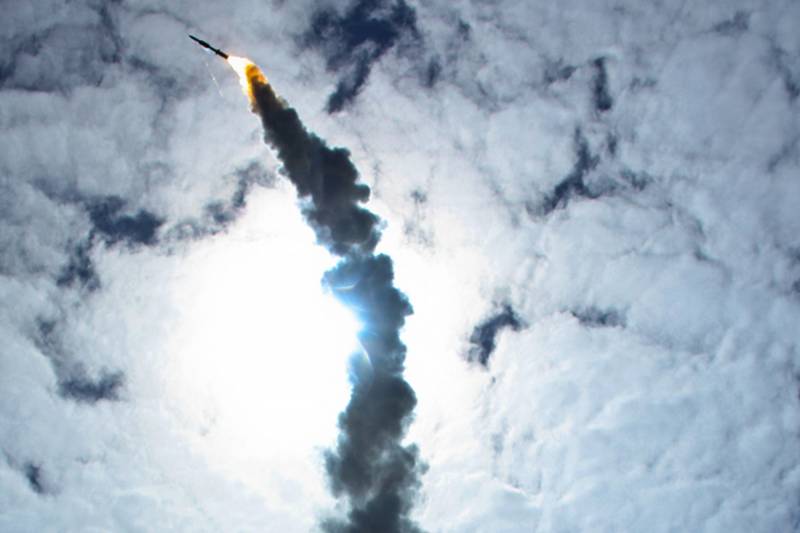
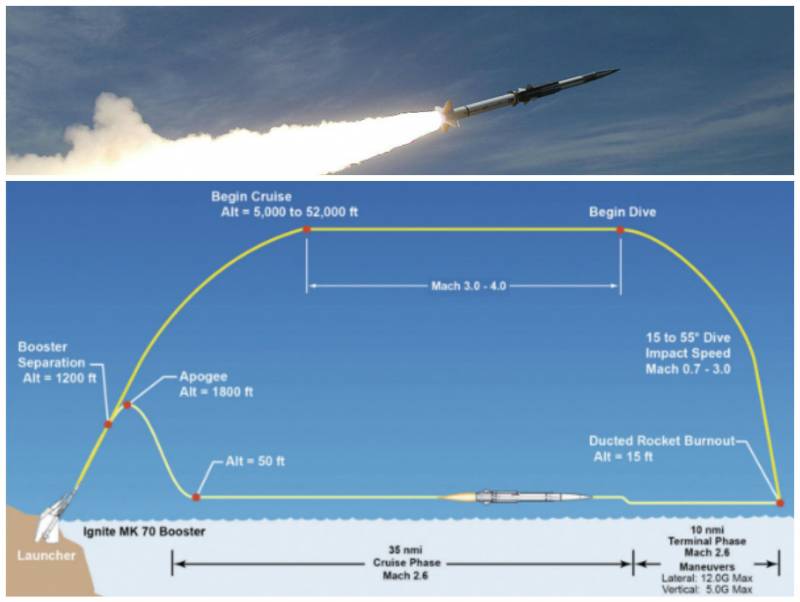
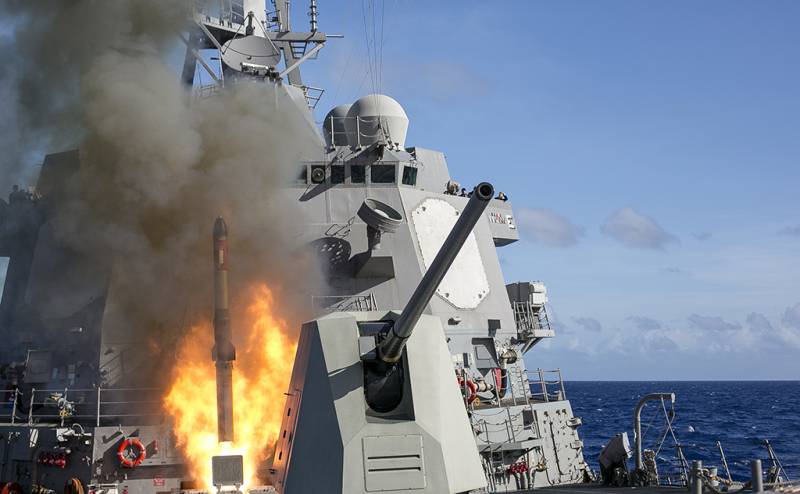

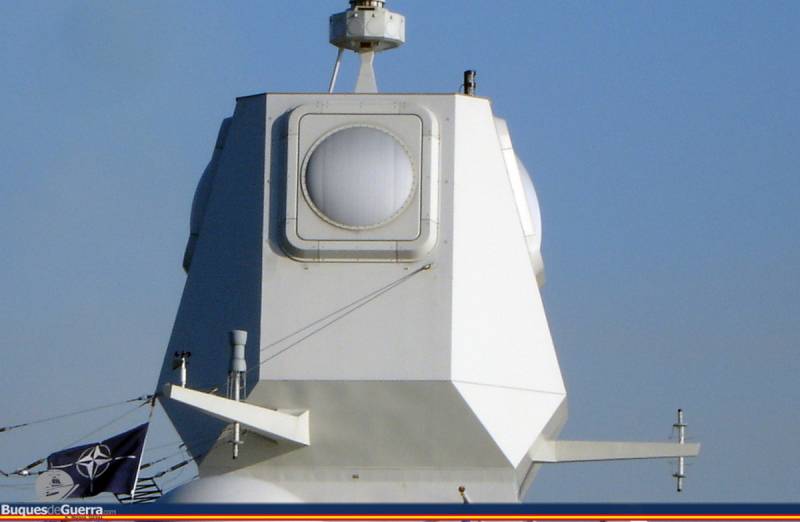
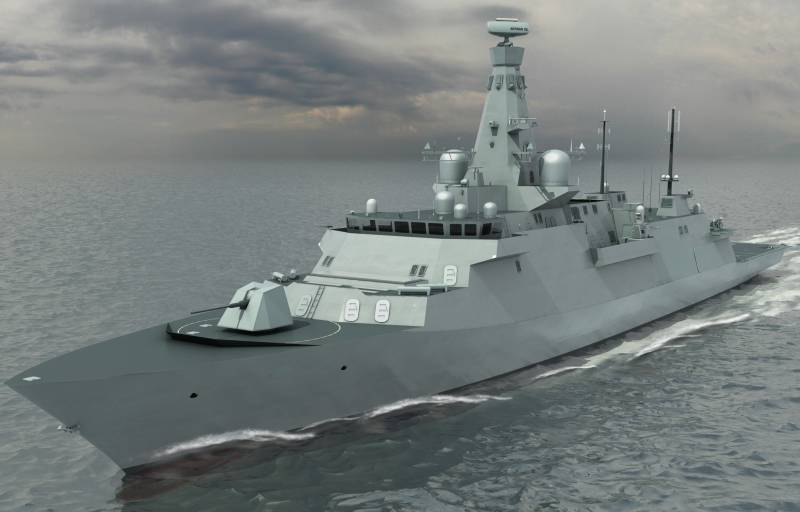
Information